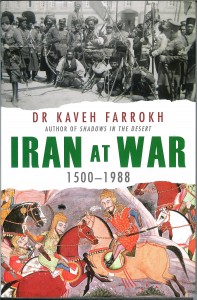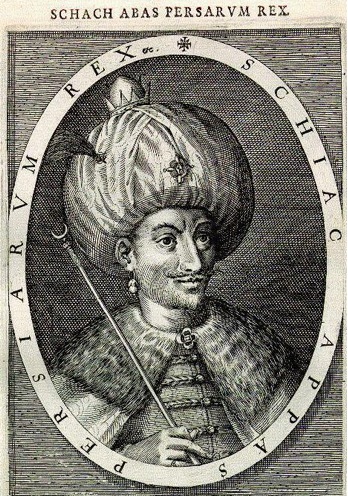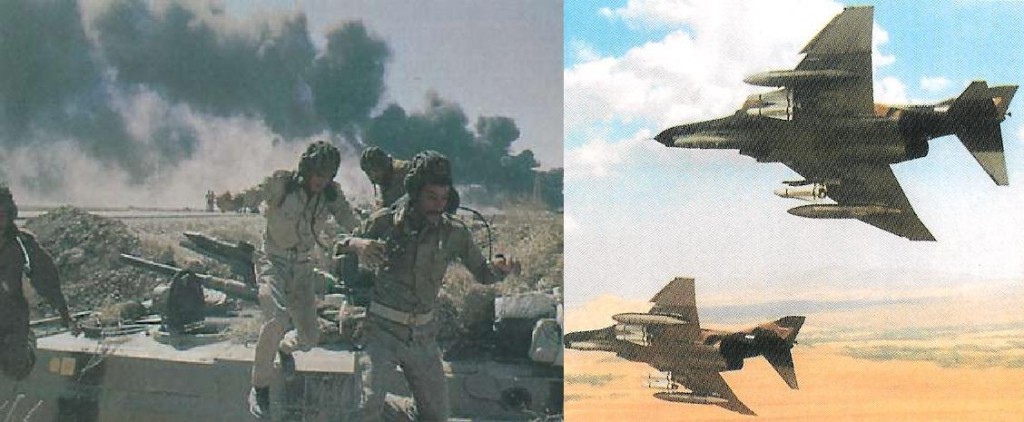
Wall Street Journal Reviews Kaveh Farrokh’s 2011 Textbook
The Wall Street Journal and the Reuters News Service recently published a review of Kaveh Farrokh’s third and most recent book entitled:
Iran at War: 1500-1988. Osprey Hardcover 480 pages, released May 24, 2011 • ISBN: 978-1-84603-491-6. Contact: John Tintera, Marketing Director @ 718/433-4402, [email protected]
To order consult Chapters-Indigo or Amazon.
The University of British Columbia’s Faculty of Arts has also announced this book on Twitter. Farrokh teaches ancient Persian history at the University of British Columbia’s Continuing Studies Division.
The review has also appeared on ,The New York Herald, ABC News (ABC 13, ABC 18, ABC 40), NBC News (NBC 6, NBC 10, NBC 12, NBC 38), CBS News (CBS 9), Fox News (Fox 19, Fox 26, Fox 28, Fox 42, Fox 54) and The Nashvile News.
Below are portions of the review on the Wall Street Journal – kindly note that the pictures inserted in the text below have not appeared in the Wall Street journal:
Kaveh Farrokh is an expert on Persian languages and Iranian history whose new book, Iran at War: 1500-1988, provides a full examination of modern Iranian military history… His previous title Shadows in the Desert: Ancient Persia at War (Osprey, 2007) was named “Best History Book” by the World Academy of Arts Literature and Media in 2008. Dr. Patrick Hunt at Stanford University, said this about it, ”… a book for all who have ever been curious about the ‘other’ view on Persia, not from the Western standpoint rooted in Greece, but from the traditions of the Persians themselves… Meticulously researched and documented…..”
A European copper engraving of Shah Abbas made by Dominicus Custos citing him as“Schach Abas Persarum Rex” or “Shah Abbas the Great monarch of Persia”. Shah Abbas’ victories over the Ottomans weakened them against the Europeans to the West, and especially in the Balkans and Eastern Europe. Note how Custos makes a particular emphasis on linking Shah Abbas to the “Mnemona Cyrus” (the Memory of Cyrus the Great of Persia).
Iran at War begins where Shadows in the Desert ended, with the Arab conquest of Persia and the rise of Islam in the mid-7th century. Farrokh then describes the pivotal 16th century which saw the rise of a powerful family, the Safavids, which ruled Iran for 200 years. During the Safavid period, a strong, secular-minded central government fielded an army that was able to stare down threats from the Turks, Arabs, and Russians in the west and the Uzbeks and Afghans in the east. According to Farrokh, the push south, east, and west from Iran’s hostile neighbors during this era foreshadowed security threats it has faced down to the current day and does much to explain why modern Iran is so eager to its project power.
Tayyara! Tayyara! (Arabic: Airplane! Airplane!). Iraqi crew of a BMP invading Iran in 1980 (at left) abandon their vehicle in haste at the sound of the roaring engines of two US-made Iranian F-4E Phantoms. Iranian Phantoms (at right) were also reported to be flying just meters above ground level to fire their 20mm cannon at Iraqi tanks and armored vehicles (Picture Source at left: www.Acig.org; Picture Source at right: Farrokh, 2011).
For readers interested in geopolitics, Iran at War provides much needed insight into “the state of mind” of the Iranian people…that set the Iranians apart from their neighbors. His analysis of the Iranian revolution in 1979 and the subsequent Iran-Iraq war provides important background information in Iran’s quest for the bomb. “Under the Shah, prior to the revolution, Iran had one of the best trained and best-equipped militaries in the world,” says Farrokh. “The revolutionary leaders, however, were fearful of the military’s power and sought to weaken it. Iran is still dealing with that weakness of conventional forces today.”
This entry was posted on Friday, June 24th, 2011 at 8:41 am and is filed under News. You can follow any responses to this entry through the RSS 2.0 feed. Both comments and pings are currently closed. Edit this entry.






